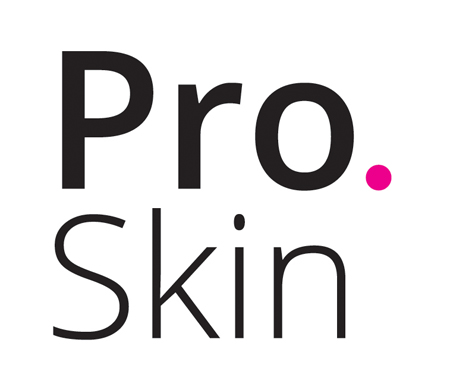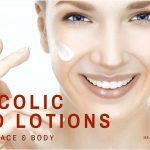Navigation article:

Recently, the speed of soppy tissue augmentation has tremendously elevated for facial rejuvenation. Statistically printed through the American Society for Aesthetic Cosmetic Surgery, there have been over 1.two million dermal filler injections in 2008, addressing a 200% increase since 1997.1 It is an especially attractive choice for patients since the results are simple to appreciate immediately postinjection and also have a foreseeable durability. Clinicians have accepted injectables because, with proper patient selection and injection technique, most dermal fillers can customize the appearance/fullness of your skin and soft tissues and will be offering a remarkable safety profile.2,3
Although fillers are usually considered as safe, unanticipated occasions and adverse outcomes can happen using these agents.2-16 To avoid complications and treat potential issues appropriately, it’s extremely important that clinicians completely understand the number and kinds of specific problems that can happen. In the following paragraphs, we discuss how to prevent, identify, and manage complications of soppy tissue augmentation agents by outlining key factors throughout the preprocedure, intraprocedure, and early and late postprocedure periods.
Preprocedure Factors
Patient Satisfaction
Soft tissue augmentation is definitely an elective cosmetic procedure, and, as a result, the patient’s satisfaction is first of all. Throughout the initial visit, photographs should automatically get to document the patient’s appearance before the procedure also to facilitate a obvious and frank discussion concerning the patient’s regions of concern. When the patient’s treatment goals happen to be discussed, the clinician should discuss which filling agents would be best suitable for the patient’s needs, along with the limitations of dermal filling agents generally. Fillers can treat fill folds, fine wrinkles, and proper contour abnormalities, however these procedures are considered unsuitable to exchange surgical interventions.17-20 Patients ought to be accustomed to the potential of swelling and bruising and be advisable to avoid these procedures immediately just before any significant social or professional occasions. Last, the clinician should discuss the expenditure that’ll be involved for any patient to achieve their intended goal, including a precise assessment of the number of syringes is going to be needed, to be able to establish realistic expectations concerning the results of the process.
Skin Testing
When a filler continues to be selected, the reactivity profile ought to be reviewed. Items that are highly reactive (ie, products that contains bovine bovine collagen) require skin testing just before application. One of the products available recently, only Artefill (Suneva Medical, North Park, California) needs a skin test. Up to now, no reactions towards the product happen to be documented, but skin tests are needed through the Fda (Food and drug administration).
Hyaluronic acidity (HA) fillers are the most widely used injectable option within the U . s . States.21-23 There don’t seem to be any significant reactions from HA application, if the formula is microbial or avian in origin. HA includes a low rate of hypersensitivity, varying from .6% to .8%.2 Compared, bovine collagen’s incidence of acute hypersensitivity is 3.5% and delayed hypersensitivity rates vary from 3% to 10%.19,24,25 Reported reactions to HA were most frequently localized, immediate, and resolved within three days, based on data from the European retrospective overview of cases between 1997 and 2001.2,26 Reactions to bovine bovine collagen might be local or systemic.
Your skin test for bovine bovine collagen is conducted by injecting .1 mL of product in to the antecubital area and, thirty days later, injecting another area (like the left scalp line). Generally, 3.5% of patients will manifest an optimistic reaction (ie, a nearby wheal-and-flare reaction) in 48 to 72 hrs.25,27 An adverse second skin test lowers the chance of a bovine bovine collagen response to under .5%. Just one skin test is conducted for Artefill, because it also includes bovine bovine collagen. Not every bovine collagen-based fillers require skin testing a few of the newer formulations have lower antigenicity. Human bovine collagen has a really low chance of reactivity, so Cosmoderm (INAMED Corp, Santa Barbara, California) and Cosmoplast (INAMED) don’t require skin testing just before treatment. Porcine bovine collagen (Evolence, Colbar LifeScience Limited, Herzliya, Israel) was authorized by the Food and drug administration in 2008 and offered the benefit of durability along with the insufficient requirement for skin testing, but has since been taken off the marketplace. A 2007 study by Shoshani et al28 established that the hypersensitivity of Evolence were built with a calculated chance of .58% and it was less than believed for bovine and human bovine collagen. Interestingly, the hypersensitivity after injecting Evolence seemed to be less than what have been observed with nonanimal HA (Restylane Q-Mediterranean, Upssala, Norway), which in fact had a calculated chance of .74%.28,29
Protection against Local Side Effects

Local injection site reactions are the most typical adverse event connected with soft tissue augmentation and can be expected to some extent in many patients undergoing these injections. Inside a large multicenter, randomized, double-blinded comparison study of nasolabial folds evaluating bovine collagen and HA, 90.6% and 93.5% of patients (correspondingly) experienced local injection site reactions.30 These reactions were under 7 days in duration and ranged from mild to moderate in severity.30 The regularity that these occasions occur makes it necessary that patients learn of swelling and/or bruising, which might occur throughout the seven-day window.
We generally suggest that patients who don’t have past cardiac arrest, stroke, or bloodstream clot discontinue aspirin 5 to 7 days just before their procedure. Nonsteroidal anti-inflammatory drug (NSAID) medications and lots of vitamin/herbal medicines connected with anticoagulation (for example e vitamin, ginseng, ginger root, ginko, garlic clove, kava kava, celery root, and fish oils) will also be frequently stopped seven to ten days just before treatment to prevent bruising.31 Some people are not against being injected during NSAID medications and accept the elevated risk for bruising, for that ease of ongoing their medications.
When assessing patients with cardiovascular stents and/or individuals taking anticoagulant medication, you should think about the time-frame where the individual is going to be using the medication and also to assess their overall chance of adverse occasions if the medical treatment is temporarily stopped.32 If the medical treatment is prescribed for any limited time period (ie, anticoagulation to have an initial attack of venous thromboembolism), it might be prudent to postpone injection treatment before the medications could be stopped. However, when the medications are prescribed indefinitely, the chance of eliminating these medications ought to be evaluated. Generally, it’s not suggested that patients taking therapeutic anticoagulants for example coumadin or Plavix (sanofi-aventis US, Bridgewater, Nj) alter their regimens for these kinds of procedures, because the risk clearly outweighs the advantage.33-37 The current American College of Chest Physicians guidelines recommend continuance of anticoagulation throughout minor dermatological procedures with safe for bleeding. These people are in a considerably greater chance of adverse occasions from thrombosis, which in some instances is up to 50%.38 These patients understand that they’re at elevated risk for bruising while taking anticoagulants, plus they accept this risk, thinking about the chance of serious adverse occasions along with other sequelae with medication termination. We’ve effectively completed dermal filler treatment in high-risk patients on anticoagulants, frequently facilitated with local anesthetic that contains epinephrine and liberal keeping ice packs.
Protection against Infection
Even though the incidence of infection following soft tissue injectables is very low, there has been reports that reinforce the significance of proper technique.7 Intuition informs us that whenever implanting in to the body foreign materials which have a particular permanence, sterile techniques ought to be employed. This is not the situation with dermal filling agents, where the significance of skin preparation continues to be unrecognized. In lots of ways, we’ve taken our understanding of other subcutaneous injection procedures and applied these to soft tissue fillers, regardless to the fact that filler agents convey more significant durability. Up to now, there has been no data with specific, universal guidelines around the appropriate approach to preparing your skin. Until sufficient data can be found, it’s helpful to think about prior publications regarding clinical encounters with central lines along with other implantable devices.
It’s been proven that skin preparation is crucial in stopping superficial soft tissue infections.39 Each one of the commercially accessible skin preparation solutions has qualities making it a great antibacterial compound, with each having variations making it unique (Table 1). Based on Calfee et al’s comparison39 of 10% povidone-iodine, 70% isopropyl alcohol, tincture of iodine, and povidone-iodine with 70% ethyl alcohol, there wasn’t any improvement in the speed of contaminated bloodstream cultures. Thinking about the reduced cost, convenience, and tolerability, the authors suggested 70% isopropyl alcohol for skin prep just before acquiring bloodstream cultures. Since that relate, chlorhexidine-based antiseptic agents have grown to be more widespread simply because they provide the quick-acting ability of alcohol with considerably longer durability and greater effectiveness.40,41
Resourse: https://academic.oup.com/asj/article/31/1/110/
 Proskin Clinics
Proskin Clinics 
